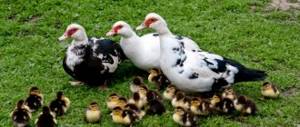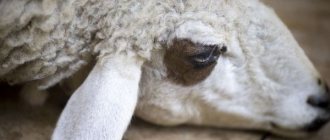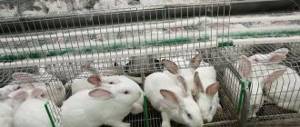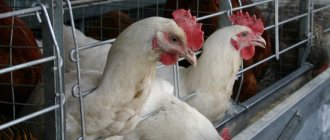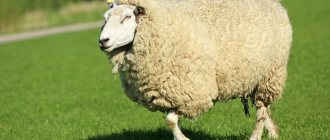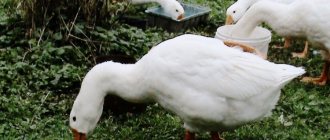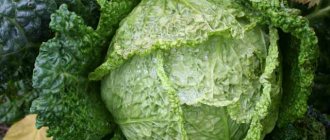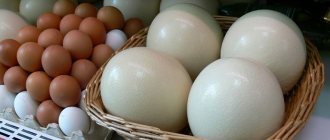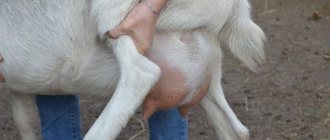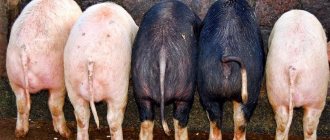Description and characteristics of Australian sheep
Australian merino sheep are smaller than meat breeds, but their wool is famous for its high quality, consisting of thin and delicate hairs. One sheep in Australia produces 3 times more fleece than any other breed.
The homeland of merino sheep is Spain. Representatives of the breed were bred by crossing Spanish sheep with Middle Eastern and African ones. For a long time, Merino sheep breeding was exclusively Spanish; under threat of execution, valuable animals were prohibited from being exported from the country. It was only in the 18th century, when Spain weakened after the war with the British Kingdom, that Merino sheep were taken to Australia.
Expert opinion
Zarechny Maxim Valerievich
Agronomist with 12 years of experience. Our best country expert.
Ask a Question
Australian breeders improved the breed and developed several varieties of Merino sheep, differing in external features and fleece quality.
Merino sheep bred in Australia are medium-sized animals. The table shows the appearance parameters according to the breed standard.
| Torso | strong, lean, harmoniously built, with a non-massive skeleton, wide chest, straight back, withers higher than the waist |
| Head | small, the ram has a slight hooked nose, and spirally twisted horns grow on the head; the female usually has no horns |
| Limbs | strong, sinewy, correctly positioned |
| Skin | thin, but strong and elastic, on the neck some breeds have either 2-3 folds of skin or a large beard |
| Wool | staple, uniform, with moderate waviness, dirty gray outside and white inside, length - 70-90 mm, thickness - 25 microns, density - 9 thousand hairs per 1 cm2, products from one individual - up to 12 kg (from this amount it turns out 55% pure product) |
In Australia, the second name for Merino sheep is snow white, since representatives of the fine-wool breed come only in white color. The covering of the body with fleece is continuous, the hair on the head reaches the superciliary ridges, on the forelimbs - to the carpal joint, on the hind limbs - to the hock.
Merino wool is an ideal sheep product for textile production. The fabric made from sheep fiber is dense, strong, breathable, warms well, does not absorb the odor of sweat, and does not electrify. The sheep product is used as a remedy for rheumatism, muscle inflammation and sprains.
Merino varieties
Based on the quality of Merino fleece from Australia, they are divided into 3 varieties.
See also
Dosage and instructions for use of Ivermek for sheep, when to prickRead
Fine
Small, fine-fleece sheep with no folds in their skin. Males weigh 70 kg, females - 40 kg. Sheep products of the 70th quality category are 5 kg per individual. The thickness of the hairs is no more than 15 microns.
Advantages and disadvantages
wool of the highest quality, ultra-fine and delicate;
animals are adapted to cool climates with frequent precipitation;
wool is not prone to rot due to dampness.
Medium
Sheep with medium density fleece. Rams weigh 80-85 kg, females - 40-45 kg. There are skin folds on the neck. Sheep products of the 66th category are 8-10 kg.
Advantages and disadvantages
thick and voluminous wool;
adaptability to arid steppe growing conditions.
thicker and coarser wool compared to the wool of fine sheep.
Strong
Sheep with coarse beige wool. Males are large, muscular, weighing up to 95 kg, females - 50 kg. The thickness of wool of the 60th category reaches 24 microns. Sheep production reaches 10 kg fleece per individual.
Advantages and disadvantages
thick and dense wool;
possibility of breeding for meat.
wool is not resistant to rotting;
Sheep are not adapted to living in humid climates.
Sheep wool
Wool is the main product obtained from representatives of this breed. Merino fleece is valued in the market for its softness, delicacy and thermal qualities. The entire coat is shorn. After processing, the fiber acquires a minimum thickness - less than that of human hair.
Merino fleece has its own characteristics:
- Softness, which is not inherent in every wool, as well as the ability to retain heat for a long time.
- Clothes made from such wool are valued for their comfort in all weather conditions.
- Merino wool contains a natural component, lanolin, which has an antibacterial effect.
- Often, fleece is naturally white in color, which makes coloring much easier. This type of wool can easily be given any shade.
- Merino wool produces three times more fabric than the fleece of any other breed of sheep.
- Wool fabric does not absorb sweat and always smells good.
Merino wool is one of the elite types of yarn; it has many advantages.
Pros and cons of the breed
Sheep farming in Australia is actively developing because Merino sheep:
- Not capricious in content. Quickly adapt to new climatic conditions. They do not require a special diet.
- They have soft, pleasant to the touch wool that retains heat well.
- They produce meat with excellent taste and nutritional value.
- They are distinguished by their fertility.
The breed also has its disadvantages, they are typical for sheep farming in all countries:
- Dense and voluminous wool often harbors insects that farmers have to fight.
- With constant high air humidity, merino wool deteriorates hopelessly, so the flock cannot be kept either in a damp barn or outside in the rain.
Most common breed
There are many beautiful breeds of sheep in the world, but only a small number are used commercially
For the manufacturer, it is important not only the quality of the fiber, but also the ability to reproduce and resistance to disease. Some of the unique breeds are at risk of becoming a thing of the past due to their small breeding volumes
Sheep of various breeds are raised in the country. Quite popular in livestock farming:
- Cheviot - semi-fine-wool, short-haired sheep for meat and wool purposes;
- The White Suffolk is a breed of beef sheep bred for local conditions;
- Peppin Merino is a breed of Merino sheep;
- The Australian White is a large breed of beef sheep that was developed for the continent;
- The Poll Dorset is a short-haired, hornless meat breed;
- Merino is a breed of fine-wool sheep, the largest population of which is found in Australia;
- Black-headed Dorper;
- South African beef merino;
- Border Leicester are meat-haired individuals.
Over 70% are purebred Merinos, making them the most common breed of sheep in Australia. Many producers prefer to breed other equally beautiful purebred and crossed varieties. Independent research and real practice show that Merino is the best dual-purpose breed, which is a profitable purchase for agricultural enterprises.
Features of maintenance and care
Although Australian merino sheep are unpretentious and hardy, sheep breeding is not an easy task. The farmer must comply with the following rules for keeping sheep:
- Maintain a warm, dry, draft-free barn.
- Ventilate the room regularly.
- Provide sheep with clean water at all times.
- Send your pets to spring pasture no earlier than the last days of April.
- Don't start grazing too early. The dew on the grass must disappear, otherwise the animal hair will become damp.
- During the cold season, provide your pets with sufficient walking time.
- Regularly bathe animals in a pool with a disinfectant solution.
- Clean sheep hooves 4-6 times a year.
In Australia, the fleece of adult sheep is removed once a year, for young sheep - 2 times (at 3 months and 13 months of age), for large rams - at the beginning of spring and autumn. Males have longer and thicker hair; the first haircut relieves them of additional weight in the hot summer. And young individuals are stripped twice in order to improve the quality of the fleece for the next haircut and to prevent the regrowth of coarse hairs. The wool is removed as a continuous fleece and sent for cleaning.
See also
How to raise sheep at home for beginnersRead
Haircuts in Australia are carried out by special workers - shearers. The procedure is carried out on a wooden platform about 2 m above the floor, using electric machines. During a working day, about 100 animals pass through the shearer’s hands.
Sheep housing
Sheep do not require much care or expensive housing. They will also thank you for meeting their basic maintenance needs. Sheep can be kept together with other farm animals. However, for commercial breeding of sheep, a separate housing suitable for housing the animals must be built.
The room for keeping sheep must be warm, environmentally friendly, and suitable for safety in adverse conditions. It must protect the livestock from predators and bad weather. Sheep are not as demanding on space, so animals can be kept more compactly than, for example, cattle. The main thing is to provide the premises for keeping animals with good ventilation, sufficient light and heat. Keep the sheepfold dry and clean by installing a good drainage system inside and a drain pipe. Change bedding for animals. Do not make the sheepfold too high, it will not warm up as well. To make the pasture safe, many farmers erect a fence around the area for sheep to graze.
The fence must be strong enough to prevent sheep from trespassing and predators from entering the pasture area. A good alternative to fencing is the invention of the “electronic shepherd”; this equipment will help keep the herd safe and sound. It is easy to install and transport, if necessary, from place to place.
Diet
Australian sheep farming is based on self-grazing. Even a grass-poor pasture is healthier for sheep than being in a pen. The preferred herbs are clover, wormwood, and alfalfa. In winter, the animals are given hay. The diet is enriched with root vegetables, pea flour, and bran. It is not worth giving grain, as it quickly makes the sheep fat. Vitamin supplements and salt stones as a source of minerals are required in the diet.
Reproduction methods
In Australian sheep farming, two breeding methods are used:
- free mating;
- artificial insemination (in rare cases).
Animals occur in January or February. A device is attached to the chest of the fertilizing ram, which leaves a mark with a number on the female’s back, so that the farmer knows which male this or that brightness happened to. They become sexually mature by the age of one year.
Pregnancy lasts 145-150 days. Sheep give birth directly on the pasture in June or July. The queen gives birth to 3-4 lambs at a time. The mortality rate of cubs in infancy is practically zero.
In Australian sheep farming, it is customary to castrate rams unsuitable for breeding at 9 months of age.
Frequent illnesses
In Australian sheep farming, lambs are mulesed at 6 weeks of age. This term refers to cutting out folds of skin on the inner thighs. The operated area of the body remains hairless. The procedure is necessary to prevent infection of the animal's skin by the larvae of blowflies that live in Australia.
Australian Merinos are susceptible to colds, so they are protected from dampness and drafts and are not allowed on dewy grass.
During the summer, animals suffer from parasitic diseases. Therefore, the use of drugs against fleas, ticks, and midges is required. Sheep have sensitive hooves to dampness and moisture. Therefore, you need to regularly check whether they have begun to rot.
Where is merino wool used?
Australia's most common sheep breed supplies exceptionally high quality wool to the world market. Excellent yarn and expensive products are made from it:
- lower thermal underwear;
- children's, women's and men's clothing;
- sportswear for winter sports.
It is merino sheep that produce valuable sheepskin of special production - mouton. It is distinguished by its shine, smoothness, softness and silkiness. Used for sewing and finishing elite outerwear - sheepskin coats, fur coats, jackets and coats.
Things made from merino wool are hypoallergenic, durable, durable and practical.
Why is sheep farming developed in Australia?
Australia is divided into grassland, grain and wet climate zones. Sheep farming is most widespread in the first zone; there are farms with more than 5 thousand heads. And the total number of sheep in Australia is about 120 million. For comparison, there are 5 times fewer people on the mainland.
Australia is one of the leading countries in sheep breeding. This is due to optimal climatic and territorial conditions. Pastures here occupy vast areas. Australia's climate is arid, semi-desert and steppe, which is ideal for sheep farming. Sheep are raised by pasture all year round and roam across endless spaces.
Unpretentious animals survive in open areas without problems; farmers only build pens and veterinary facilities. As a result, sheep farming provides good income at reasonable costs in Australia.
